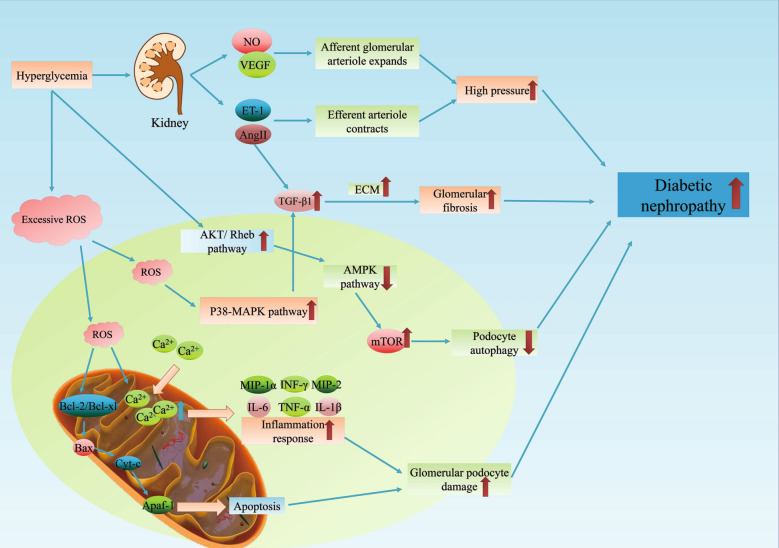Fig. 1.
Pathogenesis of diabetic nephropathy. The hyperglycaemia state prompts the kidney to release VEGF and NO to expand afferent glomerular arterioles and AngII and ET-1 to contract efferent arterioles, which causes high blood pressure and leads to the occurrence of DN. TGF-β upregulation by Ang II promotes the process of glomerular fibrosis and aggravates DN. In hyperglycaemia, excessive ROS accumulate and open the mPTP, causing the intracellular Ca2+ concentration to increase, activating several apoptotic enzymes and inflammatory mediators and inducing glomerular podocyte damage. ROS can also activate the P38-MAPK pathway to increase the synthesis of TGF-β, which increases the level of ECM proliferation, promoting inflammation and fibrosis of the kidneys and ultimately leading to the occurrence of DN. High glucose can activate the AKT and Rheb pathways, inhibit the AMPK pathway, and promote the activation of mTOR to inhibit podocyte autophagy and promote the progression of DN

